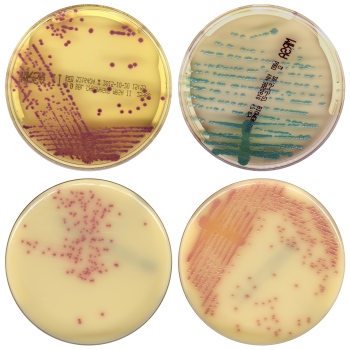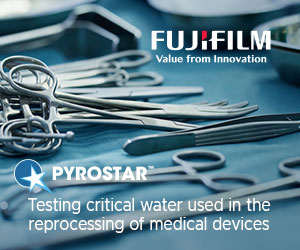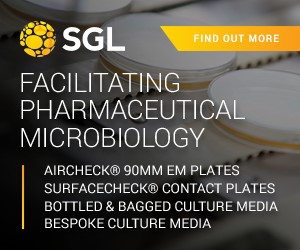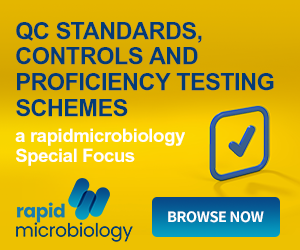Neogen’s ANSR® fo...
Motorised Microscope...
19th February 2016 Content supplied by: Copan Diagnostics, Inc.
Study Shows WASPLab™CDM Accurately Reads Chromogenic MRSA Plates

COPAN Diagnostics, Inc. is pleased to announce groundbreaking results of a multi-center study titled “Automated Scoring of Chromogenic Media for the Detection of MRSA using the WASPLab Image Analysis Software1” recently published in the Journal of Clinical Microbiology. The study performed by Faron et al (2015) is unique in its class, testing 57,690 samples and demonstrating that the WASPLab™ image analysis software can automatically detect and segregate positive from negative MRSA samples using chromogenic agar with a sensitivity of 100%, and a specificity of 90-96% (varying by location).
In fact, the software was able to detect an additional 153 positive MRSA patients that were missed by manual reading. Locations of the participating laboratories spanned across the globe including Italy, The Netherlands, Canada, and the United States.
Digital imaging in Microbiology is a relatively new phenomenon that is changing the way laboratories work. COPAN’s Chromogenic Detection Module (CDM), which was used for the study, utilizes an algorithm to identify the presence colonies on a plate and distinguishes between different colors to group the cultures into negative and positive cultures.
“The study’s sample size, which includes over 57,000 samples, and the level of sensitivity, which is 100%, makes this study unmatched in the industry,” stated Norman Sharples, CEO of Copan Diagnostics. This study focused on identifying Methicillin-resistant Staphylococcus aureus (MRSA), using chromogenic agar from three different manufacturers (BD Diagnostics, bioMeriéux, and Bio-Rad Laboratories), which produce growth with different pigmentation colors. The cultures were read by the WASPLab™ CDM software and manually by a laboratory professional. The laboratory professionals were blinded to the software’s results.
The scores showed that of the 57,690 plates, 1,367 were determined positive by both automation and the manual reading process. In addition, the CDM software recorded 5,210 additional plates as “non-negative,” that had been manually recorded as negative. After a second manual examination 153 or 2.9% of these discrepant cultures were re-classed as positive for MRSA. The software’s reading threshold is intentionally set with a high level of prudency designed so it never misses a positive MRSA culture. In fact in this large study, the software never reported any manual positive plates as negative, which demonstrates the CDM has a sensitivity of 100%.
The specificity percentage 90 - 96% score varies by location due to the conservative threshold of the CDM settings, which set the limitations low in order to avoid any “false negative” interpretation. Most importantly, the data from this study suggests that the CDM software is more sensitive than manual reading of plate cultures.
“The results were impressive as 88.6% of the chromogenic plates were never physically touched by the laboratory professionals since they were accurately segregated as negative by both the software and the technologist. This capability reduces the hands on time considerably. The Chromogenic Detection Module is not meant to be used without the technologist, but to provide the technologist with valuable tools that rapidly pre-screen cultures, detect the presence of specific organisms of interest or known pathogens then segregate cultures into positive and negative groups that enable faster turnaround times and actionable results within the therapeutic window” added Sharples.
The results of the data show that the WASPLab™ automated digital image analysis software can be used to accurately sort positive and negative chromogenic agar plates, regardless of the chromogenic substrate. The application of the Chromogenic Detection Module for MRSA is only the first step in a series of algorithms developed by COPAN and available to WASPLab™ users to further the relevance and speed of the laboratory results.
“Clinical microbiology relies heavily on the reading and interpretational skills of the technologist and microbiologist, in a time of diminishing resources and increasing work volumes the advancement in these imaging algorithms supports the value of digital microbiology and full laboratory automation for the continued output of quality results and improved patient care,” concluded Sharples.
For a copy of the study, click: http://goo.gl/snOaCu.
Reference:
1. Faron et al. (2015). “Automated Scoring of Chromogenic Media for the Detection of MRSA using the WASPLab Image Analysis Software.” J. Clin. Microbiol. doi:10.1128/JCM.02778-15
Tags:
Date Published: 19th February 2016
Source article link: View
Related news
Neogen’s ANSR® for Listeria
Motorised Microscope Stand for Viewing






